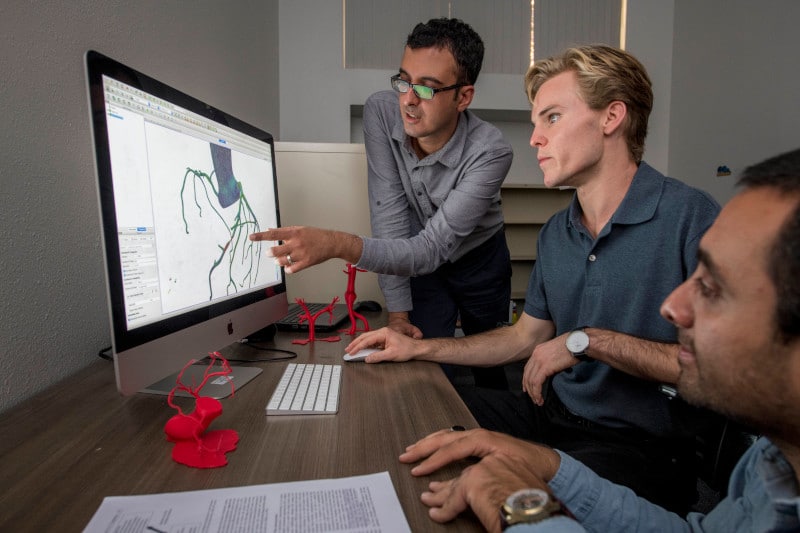Not convinced yet that keeping your distance and wearing a mask is worth the trouble? Perhaps scientific evidence to the contrary will help.
Amir Arzani, an assistant professor of mechanical engineering, is director of the Cardiovascular Biomechanics Lab, which studies the mechanisms behind initiation and progression of different cardiovascular diseases, developing computational models that can capture the multiscale and multiphysics nature of cardiovascular disease.
“In my lab, we routinely use a 3-D computer modeling technique called computational fluid dynamics (CFD) to study complex fluid flow processes,” he said. “We use numerical modeling and high-performance computing to solve the fundamental mathematical equations that govern fluid flow. Typically, we use this technique to study blood flow in diseased arteries, but more recently, we have used these advanced computer simulations to study airflow and airborne aerosol transport in lung airways.”
Arzani’s team is now using these computer simulation techniques to study the mechanics of sneezing and coughing.
“We have all heard about the importance of social distancing during the COVID-19 pandemic,” Arzani said. “However, there are many questions about its effectiveness. We wanted to know whether this virus can spread during sneezing, coughing and even regular breathing. We wanted to know how wearing a mask will influence the spread, and how far apart we need to stay from one another to be safe. Does this depend on our own breathing pattern as well? Will the situation change during a windy day? These are all questions that we are trying to answer using CFD simulations.”
Arzani is planning on developing more sophisticated models to answer these questions.
“We see an excellent opportunity here for fundamental fluid mechanics research and how it could be used to provide social distancing guidelines,” he said.
Arzani teaches several undergraduate and graduate-level courses, including Fluid Mechanics, Advanced Computational Fluid Dynamics and Cardiovascular Fluid Mechanics. He believes the computer simulation “is an excellent way to motivate undergraduate students in our fluid mechanics classes to see how what they learn is relevant in the practical world, including the current pandemic.”
This video shows some of the team’s very preliminary 3-D simulations of sneezing. “We use an open-source finite-element software called FEniCS to study fluid flow during sneezing and couple that with particulate matter transport due to sneezing. These 3-D simulations were done in high resolution thanks to NAU’s high-performance computing cluster, Monsoon,” he said.
Arzani’s work spans a variety of disciplines, including computational fluid dynamics, computational nonlinear structural mechanics, mass transport, dynamical systems, medical imaging, systems biology and multi-scale modeling.
Kerry Bennett | Office of the Vice President for Research




